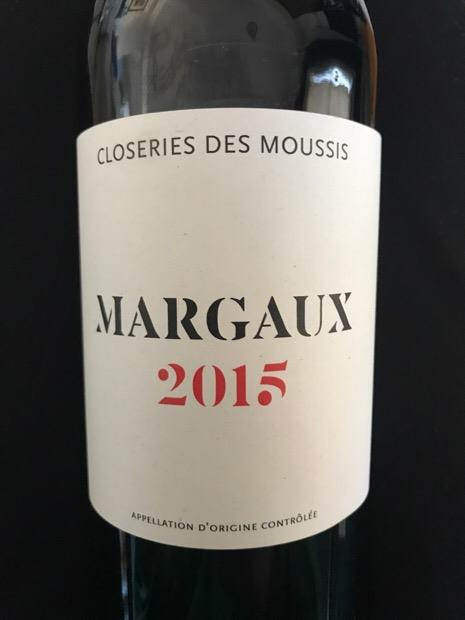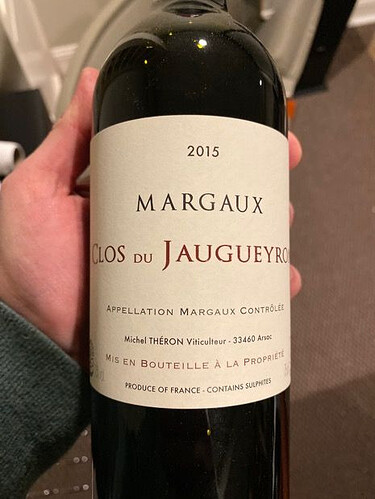I tried these together in the runup to Christmas:
Closerie des Moussis - Margaux 2015
This is a tiny domain (1.8 hectares) created in 2009 by a couple of winemaking women, Pascale Choime and Laurence Alias. They make mostly a Haut-Médoc, but also a small quantity of Margaux, plus a similarly small quantity of a wine called Baragane, using pre-phylloxera vines. They lease rather than own the vines, and their original holding was passed on to them by their friends, Michel Théron and Stéphanie Destruhaut of Clos du Jaugueyron. They also make a range of other wines using grapes from other growers in the area. All the wines are organic.
On opening the 2015, I was a bit destabilized: the nose was very fresh, full of spring flowers, violets and cherry, which was fine, but the attack was much the same, with so much sappy fruit that it was like drinking a fruit cocktail. So I decanted it, which allowed things to settle down. Coming back a couple of hours later, the fruit was a little more like what I had expected originally, with more blackcurrant and raspberry showing, and a very dusty Margaux finish. As the evening went on, the wine became a little more classical, with waves of darker cherry and blackberry, but retaining the very crisp, sugar-free profile.
Clos du Jaugueyron - Margaux 2015
Compared to the Moussis, this was totally different at first, showing spring flowers too but a much deeper blend of blackberry and vanilla on the nose, with a more structured mouthful of blackberry and dark cherry, still slightly tannic. Opening up, it displayed the usual charm and elegance, but with more body and persistence than earlier vintages I’ve tried. Clearly this is going to be an outstanding Jaugueyron and probably an outstanding Margaux. There’s a casual classiness which puts it way ahead of many Margaux CCs.
Sipping them together was like meeting cousins of the same family - I’ve always thought that Jaugueyron had a close resemblance to Loire reds like those produced by Roches Neuves, but the Moussis, although recognisable as a Margaux, actually tasted very much like a Roches Neuves Franc de Pied, and even more so, like the Clos de Maulevrier Ante-Phyollera cuvée. In comparison, the Jaugueyron was much more like a classic Bordeaux.
I had never tried a Moussis Margaux before, and I was impressed: this is a wine for those who want to try something different from Bordeaux. It is the polar opposite of the slightly syrupy, rich wines that many continue to produce. Like the Jaugueyron, there is a definite link to Bel Air Marquis d’Aligre and of course their aim is to get back to the more “natural”, uncluttered taste of wines from the past. The more I tried it the more I was convinced by the quality - the sappy fruit takes a bit of getting used to but once the palate adjusts, it’s absolutely delicious - and at 12.5°, it really is a throwback to the good old days.
In terms of prices, the Jaugueyron costs around 50€, the Moussis around 40€. I would happily pay those prices again.

